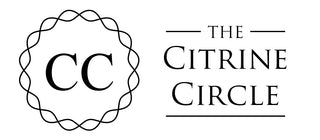If you're new to collecting , or even if you're not, you might be a bit confused about what exactly the difference is between a crystal, rock and a mineral. Are they all the same thing? Read on to find out!
MINERAL
There are a few different uses of the word 'mineral', we will be looking at the geological use, rather than those tasty mineral supplements you take with your breakfast. In geology, technically speaking, a mineral is a "naturally occurring, inorganic solid, with a definite chemical composition and ordered internal structure". Now that sounds super technical, so let's break it down!
Naturally occuring - it can't be manmade, and you have to be able to find it naturally in the earth.
Inorganic - don't worry, this doesn't mean they're made with pesticides. Inorganic refers to things that are not formed from organic (animal or plant) matter, so Jet and Amber are ruled out.
Solid - it has to be a solid (think back to your science lessons - gas, liquid or solid!), so although ice is a mineral, water is not.
A definite chemical composition - minerals must have a definite chemical composition which is exactly the same every time, no room for error! This is why Garnierite is not a recognised mineral, as it has a varying chemical composition.
An ordered internal structure - this means that the atoms of the mineral have to be nice and organised and repetitive. This means that Obsidian is not technically a mineral, it is a mineraloid, as it does not have a nicely defined crystalline structure, neither does Opal.
In reality, although that all sounds like a lot to take in, the rule is that all minerals are also crystals, as they have crystalline, repeating structures. However, not all crystals are minerals - read on!
CRYSTALS
Ok, so are crystals and minerals the same thing? Not always! A crystal is defined as any solid that has an organised structure. This means they can't be randomly arranged as they are in something like glass or opal. So, the same criteria up to a point as a mineral, but with some important exceptions.
Firstly, crystals do not have to be inorganic. This means that you can have crystals of sugar, for example. Secondly, they also do not have to be naturally occuring, which means synthetic crystals and gemstones such as manmade sapphire or quartz, both of which are widely used in industry, still count as crystals, but not minerals.
ROCKS
Ok, so what about rocks? Is that just a general name for everything? Although yes, we do affectionately call our crystals and minerals "rocks", there is more to it than that. A rock is defined as being a naturally occurring combination of two or more minerals. Lapis Lazuli is a good example of this - rather than being a distinct mineral in it's own right, it is actually made up of multiple different minerals, with a varying chemical composition. Lapis Lazuli is composed of Hauyne/Lazurite/Afghanite (and other blue minerals), Calcite, Pyrite and sometimes more. The varying combinations of these different minerals make it a rock, rather than a mineral.
SUMMARY
So in simple terms, rocks are made up of two or more minerals, all minerals are crystalline, but not all crystals are minerals!


Lordthothsson
Great read …..well taught! Well explained!
Crystal
This is amazing! Thank you so much!
Larinda Lipscomb
I’m a beginner and I understood first read, appreciated the clear and concise style, very easy read. I feel like I’m off to a good start, yay 😊
Amy
You are an excellent teacher! Thank you for these wonderful articles
Karamaddin Jahandost
All information about precious stones